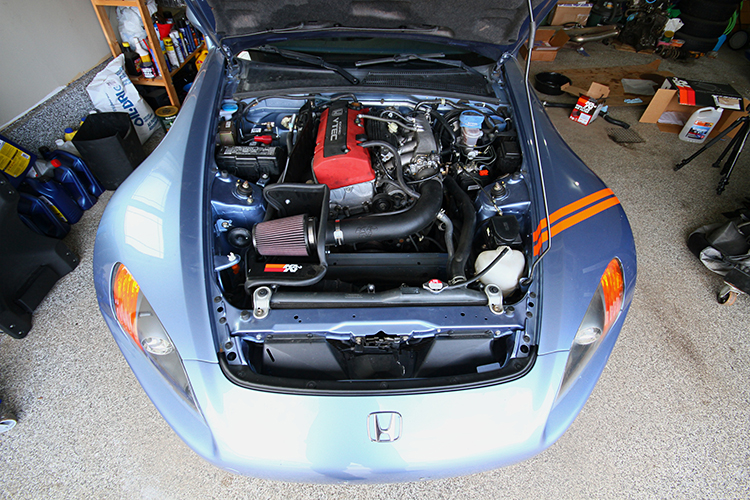
Imagine the unnerving moment: you start your powerful Ford F-Series truck, ready for the road, and your entire digital dashboard goes completely blank. Your speedometer, fuel gauge, and crucial warning lights – all vanish into a dark void. This isn’t a hypothetical nightmare, but a stark reality now facing over 355,000 Ford F-150 and Super Duty truck owners across the United States due to a critical software defect.
This widespread issue, flagged by the National Highway Traffic Safety Administration (NHTSA), can leave drivers “essentially flying blind” in vehicles that can weigh up to 19,000 pounds. Losing access to vital safety information like vehicle speed, fuel levels, and warning indicators significantly increases the likelihood of a crash, turning a routine drive into a dangerous gamble. Ford has initiated an urgent recall to address this serious concern, aiming to restore confidence and safety for its truck owners.
As a vigilant consumer, understanding the intricacies of this recall is paramount. This in-depth guide will break down every essential detail, from identifying the exact models affected and the technical reasons behind the malfunction, to outlining the steps Ford is taking to rectify the situation. Our aim is to provide clear, actionable insights, ensuring you have all the facts necessary to protect yourself and your valuable F-Series truck.
1. **The Immediate Danger: Blank Dashboard Screens**The core of this critical recall revolves around a harrowing possibility: your truck’s instrument cluster screen going completely blank on startup. This isn’t merely an inconvenience; it’s a profound safety hazard that strips drivers of the ability to monitor essential operational data. When this occurs, vital information such as your vehicle speed, engine RPMs, and fuel levels simply disappear, leaving you without the critical feedback needed for safe operation.
Beyond basic driving metrics, the blank screen also obscures crucial warning lights. Imagine needing to know if your oil pressure is low, your engine is overheating, or if a critical system fault has occurred, only to be met with an unreadable display. These telltales are designed to alert drivers to potential mechanical issues that could lead to breakdowns or, even worse, accidents, leaving you guessing about your truck’s health and potential dangers.
The National Highway Traffic Safety Administration (NHTSA) has underscored the severity of this defect, explicitly flagging it as a significant “crash risk.” Their reports highlight that drivers operating a vehicle without immediate access to speed or warning indicators face a substantially higher probability of accidents. This condition can particularly occur “in certain conditions” or when the engine is restarted at a “specific point after being turned off,” further increasing the unpredictability and danger.
The experience is akin to navigating heavy traffic while your eyes are diverted, or worse, completely closed off from vital information. One could say it’s like “texting while driving, except your own dashboard creates the distraction,” as the situation inherently forces a driver to make critical decisions without complete data. This isn’t just a matter of comfort; it’s a direct challenge to driver safety and situational awareness, demanding immediate attention from owners and the manufacturer alike.
For consumers, understanding the precise nature of this danger empowers them to recognize the symptoms early and take proactive steps, rather than being caught off guard. Knowing that critical information could vanish provides a crucial layer of preparedness, reinforcing the importance of addressing this recall promptly.

2. **Which Trucks Are Affected? (Models and Years)**This significant recall campaign by Ford Motor Co. primarily targets a broad spectrum of its popular F-Series trucks, encompassing both the highly regarded F-150 and the robust Super Duty lineups. Specifically, the recall impacts all 2025 F-150 models, which represent a substantial portion of the affected vehicle population. Owners of these particular trucks need to be especially attentive to upcoming notifications and advisories regarding the necessary remedy.
In addition to the F-150, the recall extends to a comprehensive range of Ford’s Super Duty trucks, covering multiple models and model years. This includes the 2025-2026 F-250, 2025-2026 F-350, 2025-2026 F-450, and 2025-2026 F-550 models. The inclusion of these heavy-duty trucks underscores the widespread nature of the software defect, affecting vehicles relied upon by a diverse group of consumers, from personal users to those in demanding commercial applications.
It is crucial for owners to understand that the defect is not limited to a small batch or specific trim levels. According to the recall report, “All of the recalled vehicles are estimated to have the defect,” indicating a pervasive issue within the software introduced into the production line. This estimation from Ford and NHTSA means that if your vehicle falls within these model years and types, it is highly probable that it contains the faulty software, warranting immediate action once notified.
To definitively ascertain if your specific truck is part of this recall, Ford encourages owners to check their vehicle identification number (VIN) on the NHTSA website or contact Ford customer service. This proactive step can provide peace of mind or, if necessary, prepare you for the forthcoming repair process. Given the potential safety implications, taking these verification steps as soon as possible is a recommended course of action for all concerned owners of these F-Series trucks.
Car Model Information: 2023 Ford F-150 Lariat
Name: Ford F-Series
Caption: 2022 Ford F-150 Lariat Luxury
Manufacturer: Ford Motor Company
Aka: Ford Lobo (Mexico, 1992–present)
Production: 1948–present
Class: Pickup truck#Full-size pickup truck
Layout: Front-engine, rear-wheel-drive layout,rear-wheel drive
Predecessor: 1941 Ford
Categories: All-wheel-drive vehicles, All Wikipedia articles written in American English, All articles that may contain original research, All articles with unsourced statements, Articles that may contain original research from September 2020
Summary: The Ford F-Series is a series of light-duty trucks marketed and manufactured by the Ford Motor Company since model year 1948 as a range of full-sized pickup trucks — positioned between Ford’s Ranger and Super Duty pickup trucks. Alongside the F-150 (introduced in 1975), the F-Series also includes the Super Duty series (introduced in 1999), which includes the heavier-duty F-250 through F-450 pickups, F-450/F-550 chassis cabs, and F-600/F-650/F-750 Class 6–8 commercial trucks.
Get more information about: Ford F-Series
Buying a high-performing used car >>>
Brand: Ford Model: F-150
Price: $47,933 Mileage: 23,551 mi.

3. **The Staggering Scope: Over 355,000 Vehicles**The sheer scale of this latest Ford recall is nothing short of substantial, affecting an impressive total of 355,656 F-Series trucks across the United States. This figure positions the current campaign as one of Ford’s larger recall actions, adding to an already extensive list of campaigns initiated by the automaker this year. Understanding this magnitude helps underscore the urgency and widespread nature of the problem, affecting a significant portion of Ford’s truck-owning customer base.
This particular recall, identified by NHTSA number 25V-540 and Ford number 25S88, is not an isolated incident in Ford’s recent history. In fact, the context provided highlights a concerning trend: “in 2025 alone, this campaign marks the automaker’s 105th, putting it well ahead of the industry average with a few months of this year left to go.” This statistic, while reflecting Ford’s commitment to “quickly find and fix hardware and software issues,” also indicates a persistent challenge in vehicle reliability and quality control that demands continuous scrutiny.
Despite the frequency of these recalls, it is essential to recognize their inherent importance for consumer safety. As the context notes, “Nevertheless, you obviously still want these recalls to happen since the Blue Oval is trying to put things right.” Recalls, while unsettling, serve as a vital mechanism for manufacturers to address and correct defects that could otherwise endanger drivers and passengers. They are a necessary component of maintaining safety standards and consumer trust in the automotive industry.
The comprehensive sweep of this recall ensures that a vast number of potentially problematic vehicles are brought to the attention of their owners, allowing for necessary repairs. This widespread impact means that many Ford truck owners will receive notifications, reinforcing the collective responsibility of both the manufacturer and the consumer to ensure these vehicles are made safe. The sheer volume of affected trucks necessitates a clear and efficient communication strategy from Ford, which will be detailed in later sections.
Car Model Information: 2019 Ford F-350 XL
Name: Ford F-Series
Caption: 2022 Ford F-150 Lariat Luxury
Manufacturer: Ford Motor Company
Aka: Ford Lobo (Mexico, 1992–present)
Production: 1948–present
Class: Pickup truck#Full-size pickup truck
Layout: Front-engine, rear-wheel-drive layout,rear-wheel drive
Predecessor: 1941 Ford
Categories: All-wheel-drive vehicles, All Wikipedia articles written in American English, All articles that may contain original research, All articles with unsourced statements, Articles that may contain original research from September 2020
Summary: The Ford F-Series is a series of light-duty trucks marketed and manufactured by the Ford Motor Company since model year 1948 as a range of full-sized pickup trucks — positioned between Ford’s Ranger and Super Duty pickup trucks. Alongside the F-150 (introduced in 1975), the F-Series also includes the Super Duty series (introduced in 1999), which includes the heavier-duty F-250 through F-450 pickups, F-450/F-550 chassis cabs, and F-600/F-650/F-750 Class 6–8 commercial trucks.
Get more information about: Ford F-Series
Buying a high-performing used car >>>
Brand: Ford Model: F-Series
Price: $36,435 Mileage: 142,230 mi.

4. **The Root Cause: A Software Glitch**At the heart of this troubling dashboard blackout issue lies a fundamental problem with the vehicle’s software. Modern vehicles, particularly those equipped with advanced digital displays, are essentially sophisticated computers on wheels. This recall serves as a stark reminder that just like our smartphones or personal computers, these complex automotive systems are susceptible to software bugs and glitches that can have serious implications for functionality and safety.
The problem specifically manifests during the crucial “ignition cycle and the sleep entry sequence for the instrument panel cluster display” of the affected vehicles. It is during this sensitive period that a software error can disrupt the normal operation of the digital dashboard. Instead of booting up correctly and presenting vital driving information, the software flaw causes the screen to fail, resulting in the dreaded blank display that has prompted this widespread recall.
This situation highlights a growing reality within the automotive industry: “modern vehicles are smartphones with wheels, complete with all the software reliability issues that entails.” As manufacturers integrate more technology into vehicles, the potential for software-related malfunctions increases. While these advancements offer numerous benefits, they also introduce new vectors for failure that require rigorous testing and prompt resolution, as demonstrated by this current Ford campaign.
Ford’s investigators ultimately “narrowed down the issue to a software-related memory protection fault over the following months,” after initial reports. This points to a specific, identifiable defect within the code that controls the instrument cluster. Understanding that the core problem is software-based is crucial because it also dictates the nature of the fix: a software update, rather than a physical hardware replacement, which often simplifies the repair process for owners and emphasizes the digital nature of contemporary vehicle maintenance.
5. **The Technical Deep Dive: Memory Protection Fault**For those who appreciate the technical specifics, the detailed explanation provided by Ford to safety regulators pinpoints the exact mechanism behind the instrument cluster failures. The issue stems from a “CAN wakeup interrupt” that can occur “within a small timeframe” during the specific sequence when the instrument panel cluster display transitions into its sleep state. This interruption, happening at an inopportune moment, is the trigger for the malfunction.
The sequence described involves the vehicle’s Controller Area Network (CAN), which is a robust vehicle bus standard designed to allow microcontrollers and devices to communicate with each other’s applications without a host computer. In this case, a wake-up signal intended to bring networked devices out of a power-saving sleep mode occurs prematurely or improperly during the cluster’s own sleep entry process. This creates a conflict within the system’s operations.
This untimely CAN wakeup interrupt then triggers what is identified as a “memory protection fault.” Memory protection is a crucial feature in operating systems and embedded software, designed to prevent applications from accessing memory that they are not authorized to use. When this fault occurs in the instrument cluster’s software, it signifies that the system’s memory integrity has been compromised, or an unauthorized memory access attempt has been detected, leading to a critical system error.
The direct consequence of this memory protection fault is that it “renders the screen inoperable on startup.” Essentially, the software enters an error state, preventing the instrument cluster from initializing correctly and displaying any information. This means that instead of seeing a functional dashboard, drivers are confronted with a blank and unresponsive screen, losing all visual cues about their vehicle’s status.
Crucially, this condition is not constant but can occur “in certain conditions,” specifically when the engine is restarted at a “specific point after being turned off.” This indicates a precise timing-related vulnerability within the software’s execution, where the specific sequence of events during shutdown and subsequent startup can inadvertently trigger the memory protection fault, leading to the dashboard’s failure.

6. **When Ford Knew: The Timeline of Discovery**The timeline of Ford’s awareness regarding this critical software defect provides important context into how the issue was identified, investigated, and ultimately led to a recall. Ford claims it first became aware of the problem “back in May,” specifically when “allegations of blank cluster screens on the 2025 F-150 first came to the company’s internal Critical Concern Review Group (CCRG).” This group acts as Ford’s internal mechanism for escalating and investigating serious product concerns.
More precisely, the CCRG received initial reports of blank instrument cluster screens on some 2025 F-150 pickups on May 9. This early detection by Ford’s internal review processes set in motion a comprehensive investigation, highlighting the company’s internal protocols for addressing critical concerns. The first formal warranty claim related to this issue was actually received earlier, on January 30 of this year, further signaling an emerging pattern of concern.
Over the subsequent months, from May through August, Ford’s Critical Concern Review Group diligently worked to understand the scope and nature of the problem, collaborating with their supplier to pinpoint the exact cause. This extensive period of analysis was essential in moving beyond initial reports to a definitive understanding of the underlying technical flaw.
During this investigation period, Ford’s supplier of the displays, Visteon (a Michigan-based Tier 1 supplier), played a key role. Visteon was instrumental in helping “narrowed down the issue to a software-related memory protection fault over the following months,” confirming the technical diagnosis. This collaboration between Ford and its supplier was crucial in moving from initial allegations to a confirmed understanding of the software defect responsible for the dashboard blackouts.
Further solidifying the case for a recall, Ford’s CCRG analyzed “connected vehicle data,” which revealed a concerning statistic: “65% of the vehicles it surveyed had ignition cycle events that could lead to a blank instrument cluster display.” This data, combined with the conclusion that “the likelihood of the problem would increase as the vehicle ages,” presented a clear and escalating risk to driver safety. Consequently, Ford’s CCRG formally approved the recall on August 15, paving the way for immediate corrective actions to protect consumers from this software vulnerability.
Car Model Information: 2023 Ford F-150 Lariat
Name: Ford F-Series
Caption: 2022 Ford F-150 Lariat Luxury
Manufacturer: Ford Motor Company
Aka: Ford Lobo (Mexico, 1992–present)
Production: 1948–present
Class: Pickup truck#Full-size pickup truck
Layout: Front-engine, rear-wheel-drive layout,rear-wheel drive
Predecessor: 1941 Ford
Categories: All-wheel-drive vehicles, All Wikipedia articles written in American English, All articles that may contain original research, All articles with unsourced statements, Articles that may contain original research from September 2020
Summary: The Ford F-Series is a series of light-duty trucks marketed and manufactured by the Ford Motor Company since model year 1948 as a range of full-sized pickup trucks — positioned between Ford’s Ranger and Super Duty pickup trucks. Alongside the F-150 (introduced in 1975), the F-Series also includes the Super Duty series (introduced in 1999), which includes the heavier-duty F-250 through F-450 pickups, F-450/F-550 chassis cabs, and F-600/F-650/F-750 Class 6–8 commercial trucks.
Get more information about: Ford F-Series
Buying a high-performing used car >>>
Brand: Ford Model: F-150
Price: $47,933 Mileage: 23,551 mi.

7. **Production Details: When the Faulty Software Was Introduced**Understanding the precise manufacturing window is crucial for owners to verify if their vehicle is affected, even before receiving official notification. The now-recalled instrument panel cluster (IPC) software was specifically introduced into the production line beginning on May 14, 2024, for the F-150 models. This marks the starting point for vehicles potentially containing the problematic code that can lead to a blank dashboard screen on startup.
For the robust Super Duty lineup, which includes the F-250, F-350, F-450, and F-550, the faulty software began to be integrated slightly later, starting on June 6, 2024. These production dates establish a clear timeline for when the defective software became part of new truck assemblies. This detailed information allows owners to cross-reference their vehicle’s build date with the specified ranges to assess their risk.
The period during which the affected software was in production extended significantly, impacting a vast number of vehicles before the issue was fully diagnosed and corrective measures were implemented. For the 2025 Ford F-150, the faulty software was used in vehicles built between May 14, 2024, and July 25, 2025, accounting for 278,376 units. This broad timeframe underscores the pervasive nature of the glitch within the F-150 production cycle.
Similarly, the Super Duty trucks—encompassing the 2025-2026 Ford F-250, F-350, F-450, and F-550—were impacted if built between June 6, 2024, and July 22, 2025. This covers 41,216 F-250 units, 30,551 F-350 units, 4,977 F-450 units, and 536 F-550 units. The cessation of the faulty software’s use on July 22, 2025, for Super Duty models and July 25, 2025, for F-150s, indicates when Ford began implementing the corrected software into their manufacturing process.
Car Model Information: 2023 Ford F-150 Lariat
Name: Ford F-Series
Caption: 2022 Ford F-150 Lariat Luxury
Manufacturer: Ford Motor Company
Aka: Ford Lobo (Mexico, 1992–present)
Production: 1948–present
Class: Pickup truck#Full-size pickup truck
Layout: Front-engine, rear-wheel-drive layout,rear-wheel drive
Predecessor: 1941 Ford
Categories: All-wheel-drive vehicles, All Wikipedia articles written in American English, All articles that may contain original research, All articles with unsourced statements, Articles that may contain original research from September 2020
Summary: The Ford F-Series is a series of light-duty trucks marketed and manufactured by the Ford Motor Company since model year 1948 as a range of full-sized pickup trucks — positioned between Ford’s Ranger and Super Duty pickup trucks. Alongside the F-150 (introduced in 1975), the F-Series also includes the Super Duty series (introduced in 1999), which includes the heavier-duty F-250 through F-450 pickups, F-450/F-550 chassis cabs, and F-600/F-650/F-750 Class 6–8 commercial trucks.
Get more information about: Ford F-Series
Buying a high-performing used car >>>
Brand: Ford Model: F-150
Price: $47,933 Mileage: 23,551 mi.

8. **The Role of the Supplier: Visteon’s Involvement**In the intricate ecosystem of modern automotive manufacturing, suppliers play a critical role, often providing highly specialized components and software. In the case of this Ford F-Series recall, the instrument cluster displays at the heart of the issue were sourced from Visteon, a Michigan-based Tier 1 supplier. This highlights the collaborative nature of vehicle development, where the performance and reliability of integrated systems depend on multiple partners.
Ford’s internal Critical Concern Review Group (CCRG) collaborated closely with Visteon during the investigative phase of the dashboard blackout problem. From May through August, this partnership was instrumental in dissecting the technical intricacies of the malfunction. Visteon’s expertise in digital display systems was vital in pinpointing the exact cause of the issue, moving beyond initial symptoms to identify the root software flaw.
It was through this collaboration that Visteon was able to “narrowed down the issue to a software-related memory protection fault over the following months.” This focused diagnostic work by the supplier confirmed the technical diagnosis, providing Ford with the specific information needed to develop an effective countermeasure. The identification of a memory protection fault as the underlying cause was a key breakthrough, guiding the subsequent software update solution.
This incident underscores the importance of robust quality control and rigorous testing not just for the primary manufacturer, but throughout the entire supply chain. While Ford ultimately bears responsibility for the recall, the prompt and collaborative identification of the defect by its supplier, Visteon, was a crucial step in addressing this safety concern for consumers.
Car Model Information: 2019 Ford F-350 XL
Name: Ford F-Series
Caption: 2022 Ford F-150 Lariat Luxury
Manufacturer: Ford Motor Company
Aka: Ford Lobo (Mexico, 1992–present)
Production: 1948–present
Class: Pickup truck#Full-size pickup truck
Layout: Front-engine, rear-wheel-drive layout,rear-wheel drive
Predecessor: 1941 Ford
Categories: All-wheel-drive vehicles, All Wikipedia articles written in American English, All articles that may contain original research, All articles with unsourced statements, Articles that may contain original research from September 2020
Summary: The Ford F-Series is a series of light-duty trucks marketed and manufactured by the Ford Motor Company since model year 1948 as a range of full-sized pickup trucks — positioned between Ford’s Ranger and Super Duty pickup trucks. Alongside the F-150 (introduced in 1975), the F-Series also includes the Super Duty series (introduced in 1999), which includes the heavier-duty F-250 through F-450 pickups, F-450/F-550 chassis cabs, and F-600/F-650/F-750 Class 6–8 commercial trucks.
Get more information about: Ford F-Series
Buying a high-performing used car >>>
Brand: Ford Model: F-Series
Price: $36,435 Mileage: 142,230 mi.

9. **Real-World Consequences: Warranty Claims and Aging Vehicles**While Ford has stated it is not aware of any accidents or injuries directly related to this instrument panel display issue, the potential for severe consequences is undeniable. The absence of critical driving information fundamentally compromises safety. However, the presence of real-world reports, specifically 95 warranty claims as of June 26, points to a tangible impact on vehicle owners. The earliest of these claims was received on January 30 of this year, indicating that the problem began manifesting in the field even before Ford’s internal Critical Concern Review Group (CCRG) officially became aware in May.
These warranty claims serve as empirical evidence that the software defect is not merely a theoretical possibility but a recurring problem affecting actual trucks on the road. Each claim represents an owner who experienced the unnerving situation of a blank dashboard, needing to seek a resolution. This accumulation of claims was a significant factor in prompting Ford’s thorough investigation and ultimately, the recall decision.
Further compounding the concern, Ford’s investigators, after analyzing connected vehicle data, made a critical observation. Their data revealed that a substantial 65% of the surveyed vehicles had ignition cycle events that possessed the conditions conducive to triggering a blank instrument cluster display. This high percentage suggests that a significant majority of affected vehicles are predisposed to experiencing this malfunction, not just a rare few.
Perhaps most alarming is the conclusion reached by Ford’s investigators that “the likelihood of the problem would increase as the vehicle ages.” This implies that while some owners might not have experienced the blank screen yet, the defect is a ticking time bomb, with the probability of malfunction rising over time. This finding elevates the urgency of the recall, as it indicates a deteriorating condition rather than a static flaw, emphasizing the necessity for prompt repairs to prevent future safety compromises.
Beyond formal warranty claims, Ford also identified at least one vehicle owner questionnaire received by the National Highway Traffic Safety Administration (NHTSA) that was potentially related to this concern. These direct consumer reports to safety regulators further highlight the real-world impact and consumer awareness of the problem, adding another layer of validation to the necessity of the recall action.

10. **Ford’s Comprehensive Solution: The Software Update**For owners of affected F-Series trucks, the critical question revolves around the solution. Ford’s remedy to the dashboard blackout issue is both straightforward and technologically aligned with the nature of the problem: a software update. The inherent digital origin of the defect means that a physical hardware replacement is not necessary, simplifying the repair process considerably for consumers.
Specifically, the solution involves disabling the problematic “memory protection feature” through this software update. While memory protection is typically a vital aspect of robust software, in this particular instance, it was the trigger for the fault when combined with the untimely CAN wakeup interrupt. By disabling this specific feature, Ford engineers have found a way to prevent the memory protection fault from occurring, thereby ensuring the instrument cluster initializes correctly.
Ford is providing this essential software update free of charge to all impacted owners. This commitment to cover the repair costs ensures that consumers are not burdened financially for a manufacturer’s defect, upholding standard recall protocols. The update can be performed either by authorized Ford or Lincoln dealers or, for greater convenience, through an over-the-air (OTA) software update, much like updates received by smartphones or other connected devices.
This embrace of OTA updates represents a modern approach to vehicle maintenance, offering significant advantages in terms of convenience. As Ford explicitly stated, the over-the-air software update is “more convenient for customers compared to an in-person dealer visit.” This flexibility allows owners to address the recall from the comfort of their homes, assuming their vehicle is equipped for and connected to receive such updates.
For vehicles brought into service, dealers were notified of the issue as early as August 25, when Ford sent a notice advising that new vehicles should not be demonstrated or delivered to customers until the update is performed. This proactive measure ensures that newly purchased or serviced vehicles are corrected before they even leave the dealership lot, preventing new occurrences of the problem. Owners should also find reassurance that affected trucks, being 2025-2026 models, should still be under warranty, meaning they would not have had to pay out-of-pocket for this repair regardless.
Car Model Information: 2024 Ford F-150 XLT
Name: Ford F-Series
Caption: 2022 Ford F-150 Lariat Luxury
Manufacturer: Ford Motor Company
Aka: Ford Lobo (Mexico, 1992–present)
Production: 1948–present
Class: Pickup truck#Full-size pickup truck
Layout: Front-engine, rear-wheel-drive layout,rear-wheel drive
Predecessor: 1941 Ford
Categories: All-wheel-drive vehicles, All Wikipedia articles written in American English, All articles that may contain original research, All articles with unsourced statements, Articles that may contain original research from September 2020
Summary: The Ford F-Series is a series of light-duty trucks marketed and manufactured by the Ford Motor Company since model year 1948 as a range of full-sized pickup trucks — positioned between Ford’s Ranger and Super Duty pickup trucks. Alongside the F-150 (introduced in 1975), the F-Series also includes the Super Duty series (introduced in 1999), which includes the heavier-duty F-250 through F-450 pickups, F-450/F-550 chassis cabs, and F-600/F-650/F-750 Class 6–8 commercial trucks.
Get more information about: Ford F-Series
Buying a high-performing used car >>>
Brand: Ford Model: F-Series
Price: $40,679 Mileage: 49,445 mi.

11. **Broader Context: Ford’s Recent Recall History**This latest recall of over 355,000 F-Series trucks, while significant, is not an isolated event for Ford. In fact, it places into a broader context of the automaker’s recall activity in the current year. In 2025 alone, this particular campaign marks Ford’s 105th recall, a figure that positions the company significantly ahead of the industry average with several months still remaining in the year. This pattern highlights a persistent challenge in ensuring vehicle reliability amidst increasing technological complexity.
While the sheer volume of recalls might seem concerning to consumers, it is crucial to view these actions through a balanced lens. As the context notes, “Nevertheless, you obviously still want these recalls to happen since the Blue Oval is trying to put things right.” Recalls, fundamentally, are mechanisms for manufacturers to identify and rectify defects, preventing potential harm to drivers and passengers. They demonstrate a commitment to safety, even if the underlying issues reflect ongoing quality control efforts.
Ford’s cumulative recall figures for the year further underscore this trend, with 109 recalls issued since the start of 2025, potentially affecting over 7.8 million vehicles, according to NHTSA data. This substantial number includes other sizeable campaigns, such as the recall of 103,000 F-150 pickups for rear axle hub bolts that could break, and a separate recall for 312,000 pickup and SUV models due to a loss of electronic power brake assist.
Kumar Galhotra, Ford’s chief operating officer, has publicly addressed this uptick in recalls, stating in a company blog that the increase “reflects our intensive strategy to quickly find and fix hardware and software issues and go the extra mile to help protect customers.” This strategy includes heightened safety testing, suggesting that Ford is actively seeking out and addressing issues rather than waiting for them to escalate into widespread problems.
Ultimately, this pattern of recalls, particularly those stemming from software issues, reinforces a growing reality within the automotive industry: “modern vehicles are smartphones with wheels, complete with all the software reliability issues that entails.” As vehicles become more digitized and interconnected, computer problems are becoming increasingly common. For consumers, this necessitates vigilance and prompt action when recall notices arrive, ensuring their vehicles remain safe and reliable in an ever-evolving technological landscape.
**Conclusion: Staying Informed, Staying Safe**
The critical recall of over 355,000 Ford F-Series trucks for a dashboard blackout risk is a stark reminder of the complexities of modern vehicle technology and the paramount importance of consumer vigilance. Losing vital information like speed and warning lights transforms a routine drive into a potentially hazardous journey. Ford’s swift action to provide a free software update, whether via over-the-air convenience or a dealership visit, demonstrates their commitment to correcting this serious defect.
Car Model Information: 2019 Ford F-350 XL
Name: Ford F-Series
Caption: 2022 Ford F-150 Lariat Luxury
Manufacturer: Ford Motor Company
Aka: Ford Lobo (Mexico, 1992–present)
Production: 1948–present
Class: Pickup truck#Full-size pickup truck
Layout: Front-engine, rear-wheel-drive layout,rear-wheel drive
Predecessor: 1941 Ford
Categories: All-wheel-drive vehicles, All Wikipedia articles written in American English, All articles that may contain original research, All articles with unsourced statements, Articles that may contain original research from September 2020
Summary: The Ford F-Series is a series of light-duty trucks marketed and manufactured by the Ford Motor Company since model year 1948 as a range of full-sized pickup trucks — positioned between Ford’s Ranger and Super Duty pickup trucks. Alongside the F-150 (introduced in 1975), the F-Series also includes the Super Duty series (introduced in 1999), which includes the heavier-duty F-250 through F-450 pickups, F-450/F-550 chassis cabs, and F-600/F-650/F-750 Class 6–8 commercial trucks.
Get more information about: Ford F-Series
Buying a high-performing used car >>>
Brand: Ford Model: F-Series
Price: $36,435 Mileage: 142,230 mi.
As informed consumers, your role in this process is crucial. Do not delay in checking your vehicle’s VIN on the NHTSA website or contacting Ford customer service to confirm if your truck is affected. Once notified, schedule the necessary software update promptly. This isn’t just about inconvenience; it’s about safeguarding your ability to operate your vehicle with complete awareness and confidence. In an era where vehicles are increasingly sophisticated computers on wheels, staying informed about recalls and acting decisively is the best way to ensure your safety and the longevity of your investment.





